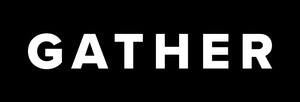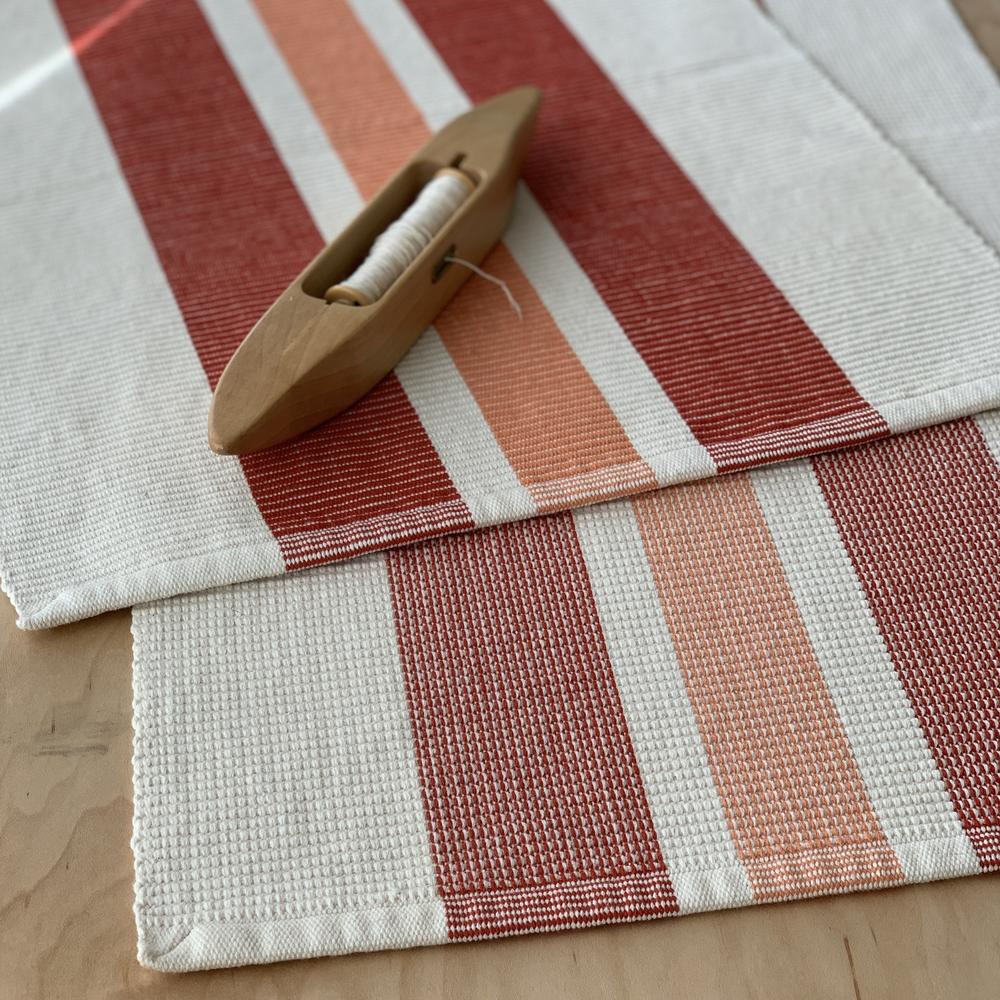You may not have heard the term “rep weave”, but you have almost certainly seen a piece of rep weave in person at some point in your life. Rep weave is one of the most popular techniques for weaving placemats. Those placemats where a thick cord makes ridges in the weft, but you only see it where it pops out at the edges? That’s rep weave.

Rep weave has two key characteristics: it is warp faced, and it uses both thick and thin weft. “Warp faced” is a way of saying that the warp is more visible than the weft. In many rep weave pieces, you can’t see the weft at all! The warp completely covers it. To achieve this, rep weavers pack way more ends of yarn into each inch of warp than usual. Instead of a standard sett for their material, rep weavers use an extremely dense sett… up to 30-40 epi for 8/2 cotton!
Since you can’t see the weft very much in rep weave, its role is usually to provide heft and texture to the finished piece. Traditional rep weave alternates between thick weft and thin weft. The thick weft makes a textured ridge, while thin weft on either side pins the warp threads down on either side of that ridge. The end result is a highly textured, sturdy piece of weaving that is ideal for floor mats, hot pads, table runners, and yes, placemats.

If you’d like to give rep weave a spin, Gather’s Rep Weave Table Runner is a great starting point. With bold stripes on a neutral ground, our Rep Weave Table Runner will add a welcome pop of colour to any home. The contemporary combination of pale orange and fiery red puts a fresh spin on an absolutely classic rep weave design. Because the weft all but disappears beneath tightly packed warp threads, the warp stripes in this runner look particularly crisp and clean, while the heavy weft gives the runner a satisfying heft.
If you want to design your own rep weave pieces, you’ll need a few key materials. Cotton makes a great thick weft. Our 8/8 cotton is thick and robust, and makes a great rep weave weft. You might also try wool for weft, if your project doesn’t need to be machine washable. Briggs & Little is an affordable Canadian option. For your warp, look for fine, smooth threads. This is not the time to experiment with sticky or slubby yarns! You’ll be cramming the warp threads in right beside each other, and they need to behave. Cotton or cottolin in 8/2, linen, and bamboo all work well.
If you have a narrow loom or just want to dip your toes in the rep weave pool, coasters and hot pads are a perfect starting point. For quick and easy mug rugs, aim for a width of 5 inches and leave room between each one to tie into simple knotted fringe. Or size up to 8-10 inches for hot pads or pot holders. For placemats, a size of 12-14 inches wide and 18-20 inches long works well. You’ll want to either use hems or leave shorter fringe on placemats so that they don’t take up precious table space. If you’re really ambitious, go long for a table runner or wide for a floor rug!

Simple knotted fringe is the easiest way to finish a rep weave piece. If you’re aiming at twisted fringe instead, just remember that you will have many more warp ends per inch than you’re likely used to! This will make your twisted fringe relatively heavy. You may want to leave a few inches more than usual to make sure your bundles can still be comfortably knotted. Hemming is also possible, with a little pre-planning. You can imagine that hemming textured, bulky rep weave its not ideal! If you’re planning to hem, weave an inch or two of plain weave using your thin weft first. Then you can fold over that thinner, flatter section for a double-fold hem. You can see how that looks on our Rep Weave Table Runner above.
If you're looking for a change from scarves or tea towels, rep weave will help you branch out into other household textiles. With satisfying heft and a totally different hand than balanced cloth, it's a fun demonstration of the versatility of handweaving.
Get in on the Rep Weave fun with the Rep Weave Table Runner from our Greenhouse Collection!

